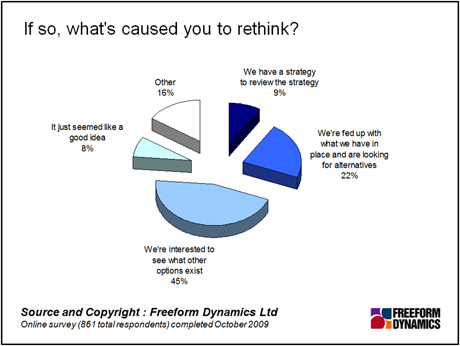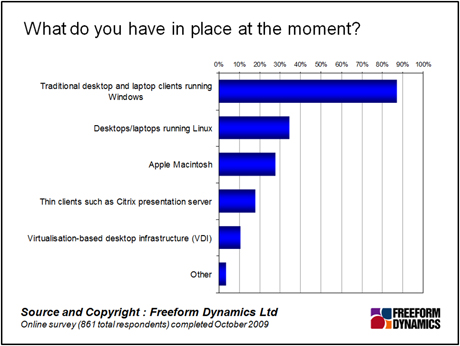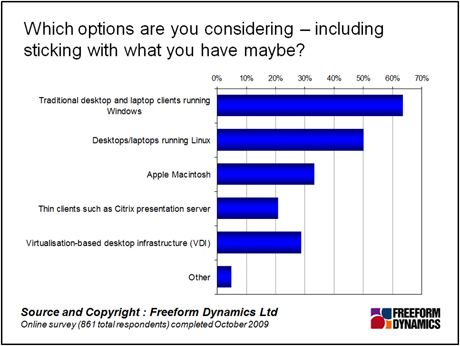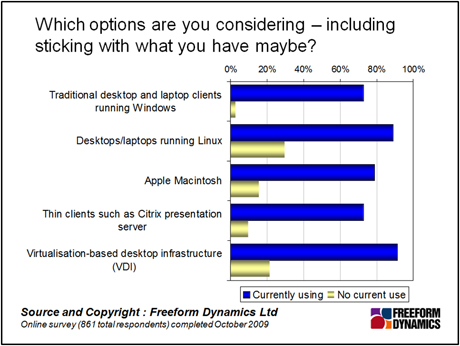In a recent poll we asked if people were rethinking their desktop strategies, and what options they were considering. So what is really happening – is anyone actually considering refreshing their desktop and laptop estates? Well when we asked you “Have you been given pause for thought about your own desktop strategy for any reason?”
Fifty-seven per cent told us that you are reviewing the situation. It has to be said that this is a big number, with everyone else happy to carry on with what you have for the time being.
When we look at why, roughly half said that it was for the good reason of taking a look at what alternatives are now available, although the nearly 10 per centwho “have a strategy to review the strategy” may be taking things to an extreme, at least in terms of process. And when did we ever say having a process was a bad thing? Interestingly over one in five stated that it was because what they have in place no is simply no longer appropriate.

Given that change is afoot, what’s going to drive decisions? Top of the list is the ability to fit with the networking and architectural constraints, i.e. work in the real world. Following this we have the usual cost-effectiveness related concerns along with recognising the need to have the ability to deliver the right level of service at the right cost. It is worth acknowledging the high response of those recognising the need to have supportable solutions and the impact of operational costs. Further down the list we see conformance with policy and ability to demonstrate compliance, followed by power-related concerns. It will be interesting to see if this has any impact on the marketing budgets of some US based vendors, who seem to prioritise the latter over the former.
Note however that this isn’t an average profile for an average organisation – it’s more how organisations as a whole view the criteria. In your organisation for example, compliance or indeed power may be very important, but this clearly won’t be the case for all organisations.
Turning to what the plans actually are, we can compare what’s currently in place, with what’s being considered. Here we do need to take into account the obvious skew towards Linux users – and indeed Mac users – in the poll. The suggestion that 35% of all organisations are Linux-based is somewhat awry, but all the same there remains a healthy amount of goodwill around other operating systems out there. If this is an area of interest to you look at our recent report here.


Meanwhile, while most other areas seem to be holding steady, over twice as many respondents as have it already, said they would be looking into VDI. Unless the Register is party to a previously unheard of group of VDI fanboys (we don’t know of them either), this would appear to be quite significant.

VDI does seem to be holding its own in terms of current users wanting to stick with it, so it doesn’t look like it’s going to be something that people think they should review in the light of their early experiences. From earlier surveys of Register readers we know that the interest in VDI is out there, but that real understanding of what the various solutions offer is not.
Equally it is clear that real world experience of the variety of offerings all being marketed under the term “VDI” is in short supply while the use of the same term to describe a multitude of different approaches is causing more than a little confusion. Despite this, your results indicate that VDI is likely to be part of many project investigations and may well make it to deployment status in some organisations. We’ll be watching that space closely as the technology matures and experience is gathered.
As a final point, one question that didn’t quite make the poll was what you might do with the old kit, should you be upgrading or replacing. Is it a case of removing the hard drives and taking to the municipal dump, reusing them elsewhere in the company, pass on to some charitable organisation or even reselling them on the open market?